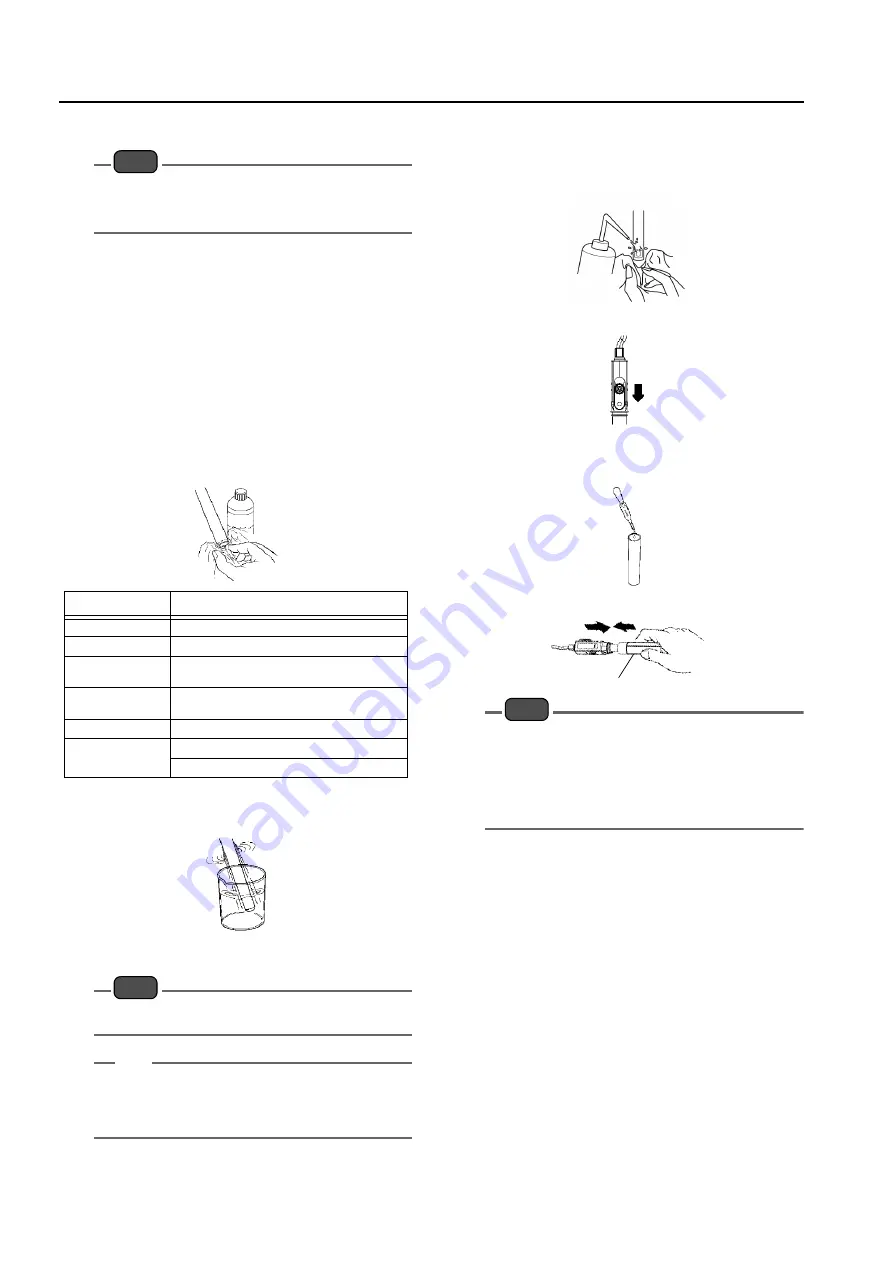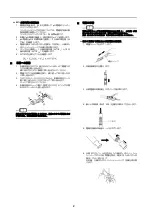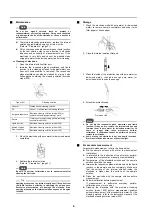
4
Maintenance
Note
Do not use organic solvents (such as acetone or
tetrahydrofuran) as cleaning solutions. Using such chemicals
may damage the body of the electrode or cause a decline in
performance.
To maintain electrode performance, replace the internal
solution approximately every one or two months.
(Refer to “ Preparation ” (page 2).)
Dirt on the responsive glass membrane or liquid junction
by the test solution may cause a decline in electrode
response and sensitivity or measurement error. If the
electrode is very dirty and cannot be washed clean
using pure water (or deionized water), perform cleaning.
Cleaning of electrode
1. Open the internal solution filler port.
2. Immerse the responsive glass membrane and liquid
junction in the cleaning solution for approximately one
hour until contamination is removed. The responsive
glass membrane can also be cleaned by wiping it with
cotton gauze containing the cleaning solution (exclude
model 230).
3. Rinse the electrode with pure water (or deionized water)
completely.
4. Replace the internal solution.
(Refer to “ Preparation ” (page 2).)
Note
Be sure to perform calibration prior to measurement after
cleaning the electrode.
Tip
Applying pressure on the internal solution until it exudes from
the liquid junction is effective in stabilizing the pH response.
Excessive pressurization will damage the electrode. Stop
applying pressure on the internal solution as soon as it begins
to exude.
Type of dirt
Cleaning solution
General
Diluted neutral cleaning solution
Oil
Alcohol, or diluted neutral cleaning solution
Inorganic substance
Electrode cleaning solution (model 220) or
hydrochloric acid approximately 1 mol/L
Protein
Cleaning solution including protein-removing
enzyme (model 250)
Liquid junction
Electrode cleaning solution (model 220)
Altered of glass,
Slow-response
Electrode cleaning solution (model 220)
Electrode cleaning solution (model 230)
Storage
1. Wash the electrode well with pure water (or deionized
water) to remove sample completely and wipe it with
filter paper or tissue paper.
2. Close the internal solution filler port.
3. Wash the inside of the protective cap with pure water (or
deionized water), then add enough pure water (or
deionized water) to soak the sponge.
4. Attach the protective cap.
Note
Do not dry the responsive glass membrane and liquid
junction. If they are dry, replace the internal solution and
immerse them in pure water (or deionized water) for 24
hours or longer. After these procedures, perform
calibration. If calibration cannot be performed correctly,
replace the electrode.
Avoid storing the electrode in hot and humid locations.
Store the electrode indoors, out of direct sunlight.
For accurate measurement
For accurate measurement, refer to the items below.
Stir the sample solution with stirrer in measurement
(calibration).
In reference to the instruction of the pH meter, perform
temperature compensation manually or automatically.
Temperature of the standard solution and the sample
solution should be the same.
Immerse the responsive glass membrane and the liquid
junction in the sample solution completely. Make sure
that the surface of the internal solution inside the
electrode is higher than the surface of the sample
solution.
Rinse the electrode with the sample solution before
measurement.
Perform calibration before measurement.
If measurement is performed everyday, perform
calibration once or more a day.
Cleaning the electrode with the electrode cleaning
solution (model 230) before measurement enables
quicker measurement of low conductivity water. For the
cleaning method, refer to the instruction manual of the
electrode cleaning solution (model 230).
Protective cap


























